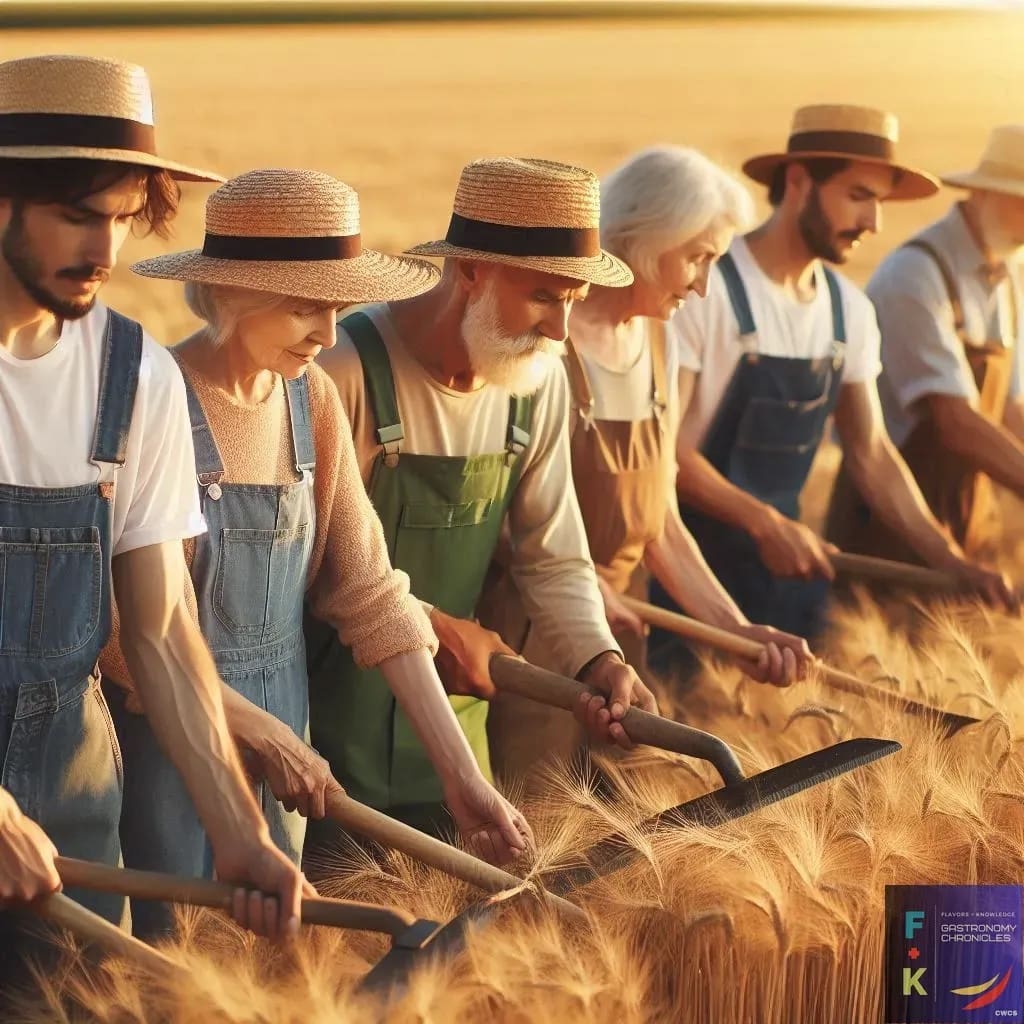Search Posts
Recent Posts
- Rhode Island Weather for May 19, 2025 – Jack Donnelly May 19, 2025
- The Controversy Over “Return to Office (RTO)” Mandates – Mary T. O’Sullivan May 19, 2025
- Our Networking Pick of the Week: Trust Networking at The Thirsty Beaver, NK May 19, 2025
- Unlocking Life’s Lessons: A Commencement Message drawn from the cards – Herb Weiss May 19, 2025
- Solemn Mass of Installation for new Bishop of Providence. Ceremonial features, reception. May 19, 2025
Categories
Subscribe!
Thanks for subscribing! Please check your email for further instructions.

Ask Chef Walter: Know the wheat differences – Walter Potenza
by Chef Walter Potenza, contributing writer
Friends:
Many people attempt to make fresh pasta because of its nutritious content and its ability to involve family and friends. However, there are some basic notions that we must know before we begin. We often hear about these kinds of hard wheat and soft wheat varieties, and sometimes, some confusion can develop.

Q: ACW reader Emily D. from North Tonawanda, County of Niagara, NY, asked about the differences between Italian wheat. Here we go, Emily!
So, let’s see what they are.
Naming
1) Grano means wheat in Italian.
2) Grano Duro and Grano Tenero are two distinct wheat typologies.
3) Grano Duro is Triticum turgidum durum in Latin and durum (strong), wheat in English.
4) Grano Tenero is a Triticum aestivum in Latin and goes by common wheat, bread wheat, and (soft) wheat in English.
Ok, we got the first part out of the way.
All kinds of wheat fit into the Duro/Tenero dichotomy.
(Duro brands) Tumminia, Perciasacchi, and Senatore Cappelli are among the best.
(Grano Tenero brands) Maiorca, Bologna, Ballero, Autonomia, and Gentile Rosso.
Little confusing? Right: Italians take food very seriously and make it so confusing that it makes you love it! Terms like Duro and Tenero only apply to wheat. Other grains such as rice, barley, and quinoa do not fall into this dichotomy.
Within the Grano Tenero category, there is a flour naming system with numbers. For example, you may be familiar with Italian 00 flour. The 00 number indicates how much bran (or crusca) is in the flour, the amount of fiber, and how whole the grain is. In the 00 cases, there is no brand; therefore, when it comes to flour made of Grano.
Tenero, the naming system, in order of increasing fiberiness, is:
Tipo 00 – no bran, the whitest of them all
Tipo 0 – a small amount of bran
Tipo 1 – more bran
Tipo 2 – even more bran
Tipo Integrale – whole wheat


Growing
In Italy, Grano Duro is south. It is generally cultivated in Sicilia, Puglia, and Basilicata. Therefore, Grano Duro needs a warmer climate and less water to flourish.
Grano Tenero, on the other hand, is north. It is generally found in Piemonte, Lombardia, and Emilia Romagna. However, both Grano Duro and Grano Tenero can be found in Sicilia.
Eating
The primary difference between these two wheat varieties is their ability to be worked into food.
Grano Duro is always the raw material for dry pasta. With Grano Duro (hard wheat), you produce semola di Grano Duro and semola rimacinata (yellowish color).
In southern Italy, Grano Duro is used to making bread, like the Pane Nero di Castelvetrano in Sicily or Pane di Altamura in Puglia. These breads enjoy a golden color, honey, nutty, crunchy, fluffy, earthy, crispy, grainy, malty, roasted, and rustic flavors.
Grano Tenero is the best option for baked sweets. Grano Tenero is traditionally used for fresh pasta like ravioli or gnocchi because it has a more neutral taste, allowing filling or sauces to stand out. The Tenero and Duro offer outstanding results and are often blended to make fresh pasta shapes and loaves of bread, pizza, and focaccia.
In conclusion, you can attempt to understand the intricate flour types or use reliable all-purpose flour. The taste will vary dramatically, but only if you know the difference. Most people will not be able to tell them apart!

May 12 – 19 – 2025 / Eight days – 7 nights

Thank you, Walter. As someone who has been in Altamura and eaten their bread, I understand the differennces.
Thank you, Ed, certainly Altamura carries the leading torch as for the ancient Italian grains, along with the bread from Matera and Aquila in Abruzzo. Great day!